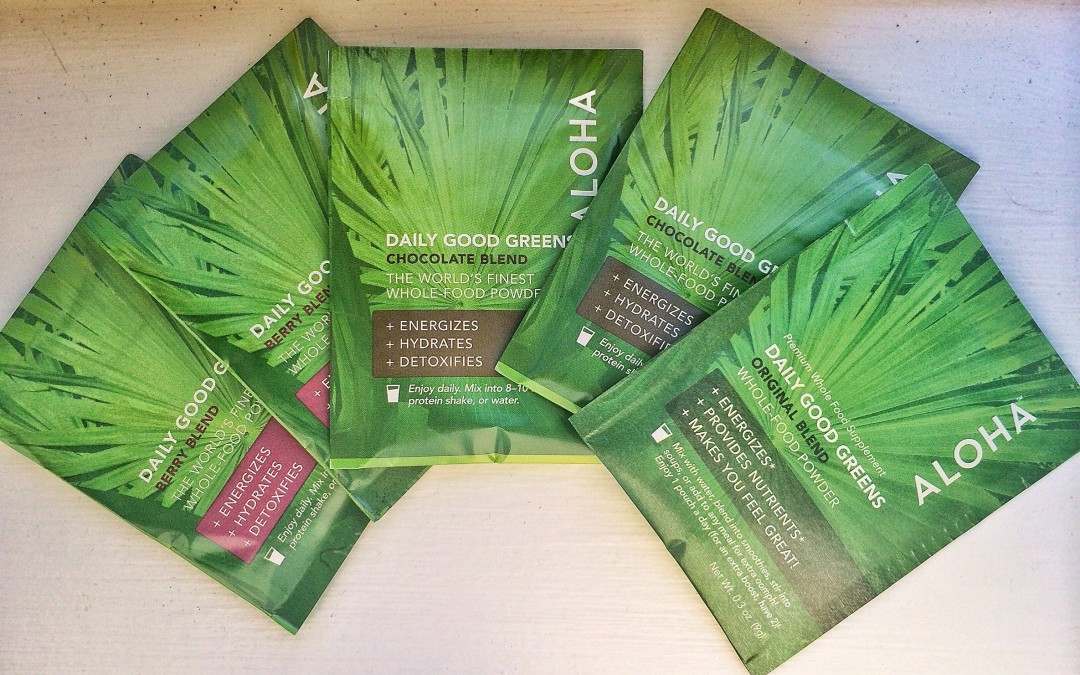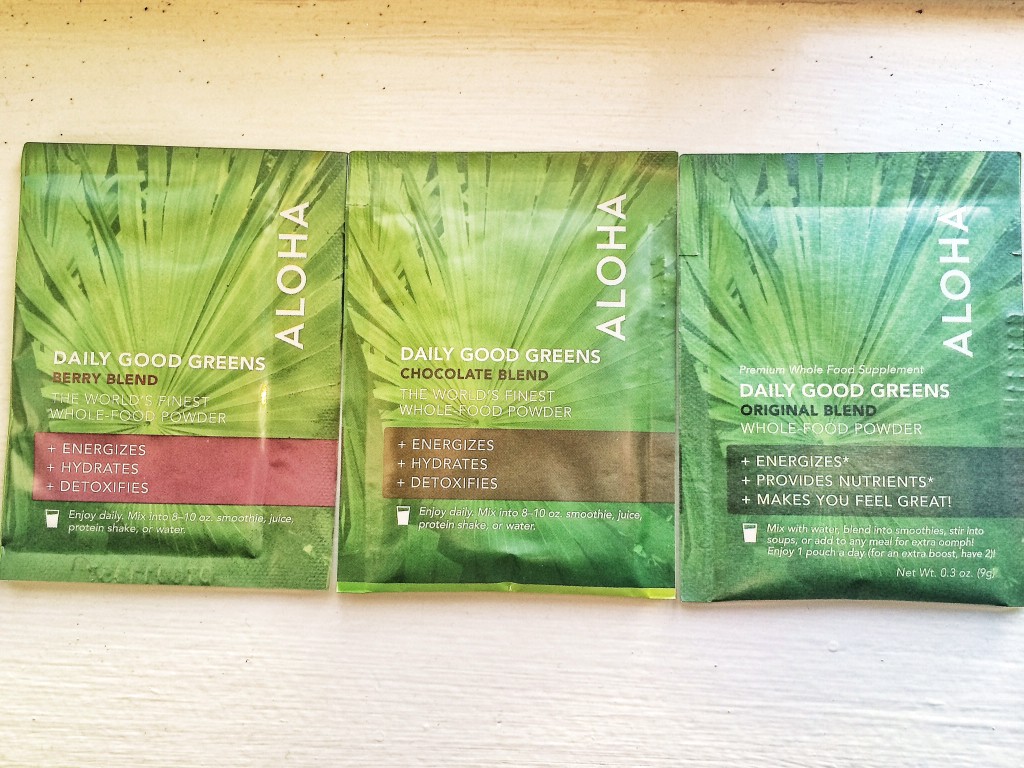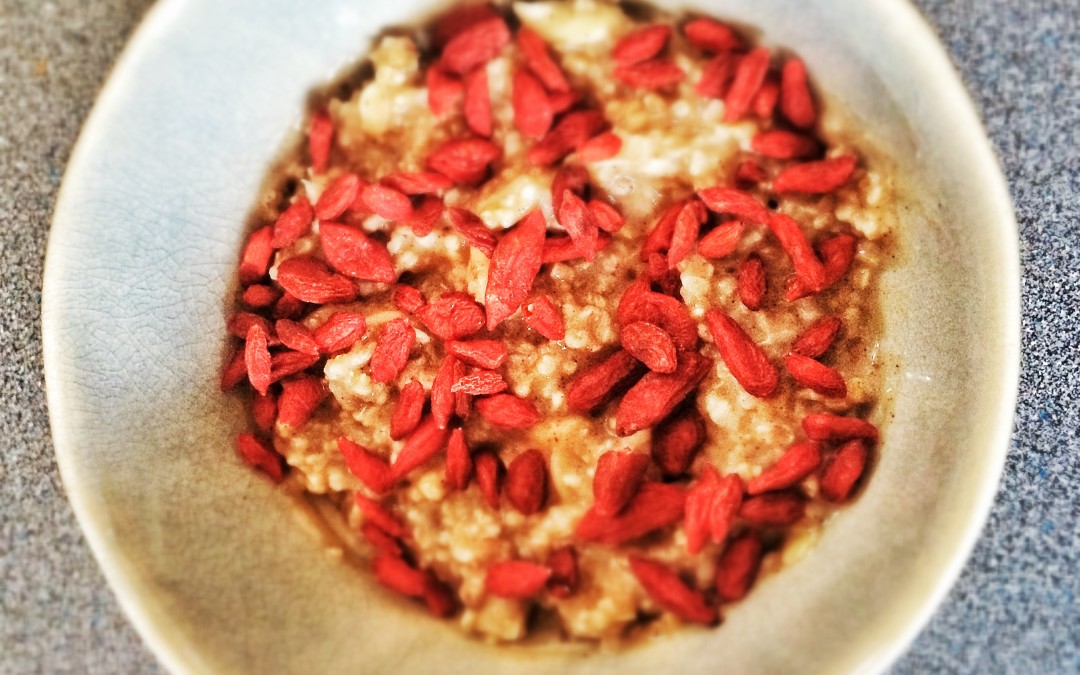
by Caroline | Sep 20, 2015 | Recipes
One of the easiest things I’ve learned to make in a long time is homemade cashew milk.
It may appear like such a daunting task to make your own nut milk. It seemed a little too Suzie-homesteader, and it never actually occured to me that it was something I could even do. But when I finally did it, I realized how stupid easy it is and has way more benefits than buying it.
Why should I make my own nut milk?
- First of all, the store bought version is kind of a rip off, because there’s less than 2% of almonds in a carton of almond milk. Most of it is water, added flavors, vitamins and thickening agents. So you’re getting very expensive water.
- Secondly, have you ever looked at the ingredient list on the back of a nut milk carton? It’s longer than you’d expect, with unpronounceable words, so I’ll just give you the copy/paste version from google:
Almond Breeze Original Almond Milk: ALMONDMILK (FILTERED WATER, ALMONDS), EVAPORATED CANE JUICE, CALCIUM CARBONATE, SEA SALT, POTASSIUM CITRATE, CARRAGEENAN, SUNFLOWER LECITHIN, VITAMIN A PALMITATE, VITAMIN D2, D-ALPHA-TOCOPHEROL (NATURAL VITAMIN E).
- With 7 grams of sugar per cup you are getting a good portion of sugar from what we all consider a health food. A woman should have 25 grams of sugar per day. And the Vanilla variety has 13 grams of sugar per cup, yikes!
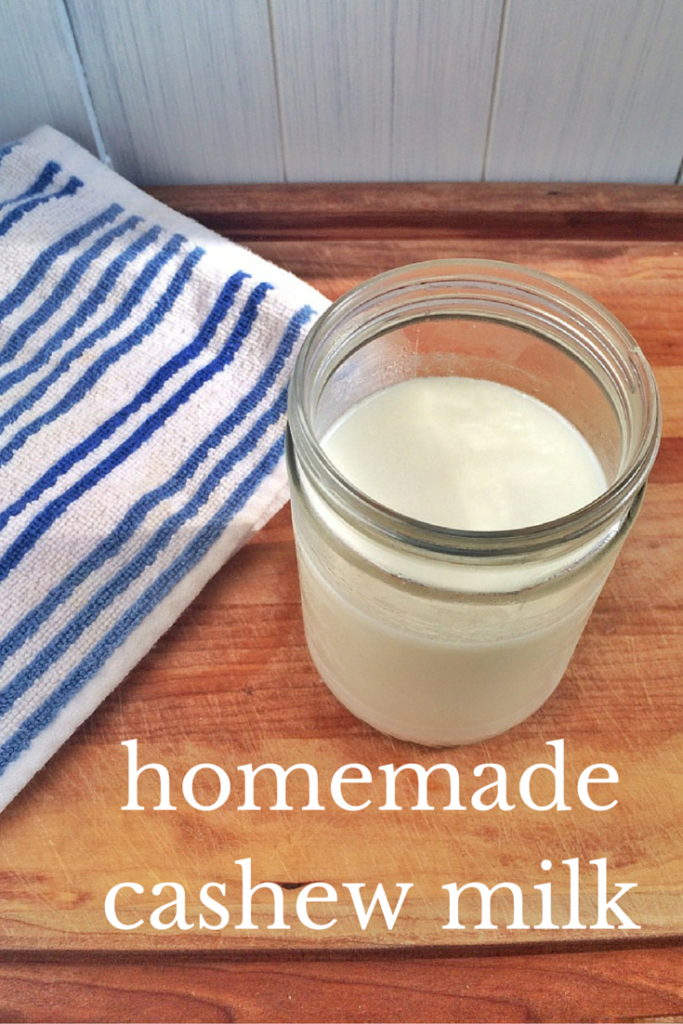
How do I make it?
- Soak 1 cup of cashews or almonds (I prefer cashews) in water. Soaking them overnight or for several hours helps make them softer and it breaks down the phytic acid and enzyme inhibitors in the nuts.
- In a blender, mix soaked nuts with 3-4 cups of water. I give a range because everyone seems to have differing opinions. Judge how much you need to make and how big your container will hold. It’s not rocket science. It will come out good either way.
- Optional additions for flavor can include dates, honey, maply syrup, vanilla, cinnamon and nutmeg. This part is up to you depending on how sweet you want it!
- Optional: Use a cheese cloth to strain out the contents of the blender and separate the liquid from the pulp. Squeeze every last drop of liquid out. HOWEVER, if you have a really great blender you might not even need to strain it.
- Store it in a jar in the refrigerator for up to a week. But if you’re anything like me it will be gone in 2 days.
And done! Enjoy it in smoothies, over granola or just by itself.
Bonus recipe!!!!!!
OK so what do you do with the pulp that is left behind? The first time I ever made cashew milk I just thew the pulp out, feeling like I had met my home-made quota for the day and was ready to sit on the couch. But it’s a lot of valuable food to waste and there’s a lot that you can do with it.
So here are some ideas of what you can do with it:
- Preheat the oven to 300 degrees. Roll or pat down flat the pulp onto a lined cookie sheet or in a baking dish. Bake it until the edges are lightly toasted and then you have crackers (15-25 minutes). You might also want to sprinkle it with salt, pepper, rosemary, thyme or any other herb you like in a cracker.
- Take that one step further and instead of using it as a cracker, wait till it cools, crumble it with your hands until it’s fine and mix it into your favorite granola recipe. In the picture above I mixed it with brazil nuts, honey, coconut milk, and cinnamon becuase that’s what I already had lying around.
I definitely encourage you to try to make your own nut milk just once. It’s faster and easier than you think!
xo, 
by Caroline | Jul 8, 2015 | Recipes
I am SOOOO excited to have as a guest blogger, Kiley from onehealthyhamptons.com. She and I are both wellness warriors in the Hamptons, and it’s been such an honor to team up with her. We have a very similar take on the Whole 30 movement/diet and I wanted to share her list of things she learned while on Whole 30, because I feel the exact same way.
Kiley DeMarco, MSW, NLC, is the founder of One Healthy Hamptons website, community, and e-magazine for all things healthy in the Hamptons, and co-founder of Hamptons Wellness Week. Kiley is Nutritious Life Certified in Nutrition and has a Masters Degree in Clinical Social Work from Boston College Graduate School of Social Work. She lives in Sag Harbor with her husband and their Swiss Mountain Dog, Sammy.
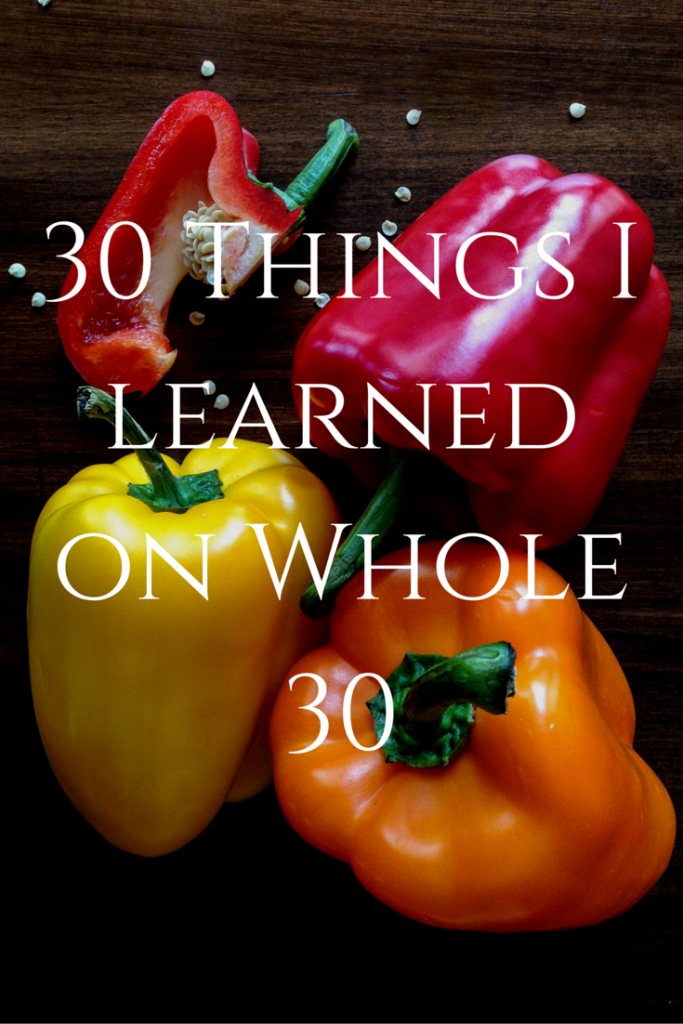
I recently completed my first (and probably my last!) Whole30. 30 days of whole foods and not a speck of grains, dairy, soy, legumes, corn, baked goods, or added sugar of any kind. I know, I know, “what the heck did you eat?!” Lots and lots of plants, lean protein, nuts and seeds, that’s what! Oh, and not a drop of alcohol. Sounds fun, right?! If you’re wondering why I would do such a thing, (I don’t blame you!) The book It Starts With Food, by the founders of the Whole30 program, inspired me to dig deeper into my own diet and lifestyle, eliminating the foods/food groups above in order to re-evaluate how my body reacts to them after the 30 days. For more specifics about the Whole30 program, click here!
Although it was tough to adjust and even tougher to refrain from just one little teeny tiny drink, (hello, it is rosé season!) I learned a ton over the past 30 days. Here’s the good, the bad, and the ugly:
1. Sugar is errrrywhere and we’re all pretty seriously addicted to it. You’ve probably heard this in some capacity, but what does that mean?
2. Consuming sugar, artificial sweeteners, and natural alternatives like honey, maple syrup, and even stevia, on a regular basis not only “feed the sugar dragon,” but also throw off our taste buds, cravings, and ability to reach satiety normally.
3. Personally, I do not enjoy black coffee; however, I discovered over these thirty days that I do enjoy unsweetened coffee. Over the past ten years or so, I’ve transitioned from a serious overload of artificial sweetener to cutting back, replacing it with more natural stevia, cutting back on stevia, and now I finally was able to rid my coffee of any sweetener. Whole30 forced me to learn to enjoy my coffee simply with Homemade CocoNut Milk and this is definitely a habit I’m happy to keep. Now I truly savor my coffee, no longer crave it sweet, and rarely do I need a second cup. Remember that baby steps are the way to change a habit for the better. Try cutting the sweetener in your coffee in half to start, if you’re soda drinker, replace one soda a day with seltzer, or satisfy your sweet tooth by having a piece of fruit for dessert. It really does get easier and easier, trust me on this!
4. That’s not to say that occasionally indulging in sweets you truly love is not absolutely necessary to living a balanced life. My love affair with dark chocolate has rekindled and our flame is going strong…although I do not neeeeeeeed it daily like I used to!
5. While many people argue that they don’t have time to eat healthy, healthy meals made from real, whole foods can be very convenient. The Whole30 program made me simplify my meals, at first, simply because of less options to choose from, but now, out of habit. Going forward, I’ll continue with this practice as I’ve noticed that less-complicated meals are easier to digest.
6. I re-discovered some great staples I had been overlooking, like good old scrambled eggs. Nothing fancy necessary. Why? Because…
7. REAL FOOD TASTES GOOD! Seasoning your meals with herbs and spices, tasting the sweetness of a piece of fruit, and savoring the true flavors of food is what it’s all about. Again, baby steps. Your palette will adjust and your body will learn to not only like real foods, but crave them. Trust me, trust me, trust me.
8. Fat does not make you fat. How do I know? Well, I did not gain (or lose) any weight on Whole30, even though I was eating a lot more (healthy) fat on a daily basis – more nuts, oil, avocado, etc.
9. More fat is not better. Some is best.
10. Whole30 or not, portions size is crucial to healthy eating, even when eating all healthy foods.
11. Avocado has my <3 on a daily basis.
12. This may turn your world upside down: peanuts are not actually nuts. A peanut is a legume, like beans, which means that your body may react differently to peanuts or peanut butter than it does nuts and other nut butters. Just some food for thought. And, yes, I did cut out peanut butter for 30 days (if you know me at all, you know that peanut butter is my favorite food in the whole wide world.) Instead, I ate homemade almond and cashew butters as well as sunflower seed butter, that just may top peanut butter on my list of favorite foods. I’m happy to say that peanut butter does now make a regular appearance in my diet; however, it is not the only thing I think about morning, noon, and night, which is probably a good thing because there are other things in life, right?
13. Rules takes the guess work out. I’m not a big fan of long-term labels, strict diets, or restriction, but committing to a short-term plan can be motivating enough that there’s no need for willpower.
14. It’s really, REALLY scary what is in 95% of our “food” these days. For example, even something like store-bought “all natural” almond milk, which a lot of people think of as a healthy upgrade, has far more ingredients than just almonds. What the heck are locust bean gum or carrageenan and why are they in my almond milk?! I decided to break up with store-bought milk for the time being and stick to my new love, Homemade CocoNut Milk. Same with the aforementioned nut butters. Just make your own or buy the ones made with just nuts. There really is no need for ‘palm fruit oil’ in your jar of nut butter. Just like there’s no need for added sugar in your tomato sauce, soy isolate in your snacks, or high fructose corn syrup in…ANYTHING. That’s a no-no no matter what.
15. Which brings me to my next point that I just can’t say enough: READ YOUR LABELS.
16. And do what’s right for you. As I said…
17. Eating healthy doesn’t mean eating only the latest superfoods or trying the latest diet trend. It means knowing what foods make you feel healthy and good.
18. If a food/food group makes you feel energized and healthy, you should probably eat it.
19. If a food/food group makes you feel crappy, tired, or sick, you probably shouldn’t eat it.
20. Whole foods are super versatile, see below:

21. Another little fun fact I learned over the past 30 days is that any woman in her 20′s or 30′s that declares that she’s not drinking will, without a doubt, be labeled as pregnant, whether it’s by your waiter or your best friends.
22. Drinking seltzer water or kombucha out of a wine glass is not the same as drinking wine, but that’s alright.
23. Waking up on a Sunday morning without any hint of a hangover or headache is worth all of the above – sacrificing the wine and being labeled pregnant.
24. Smoothies are delicious and nutritious. Smoothies aren’t on Whole30 due to a lack of chewing, the act that kick-starts digestion and satiation. So, what’s a smoothie lover to do? Chew your smoothie! Seriously, do it. I missed my smoothies, green smoothies, and smoothie bowls and am happy to introduce them back into my routine, especially heading into the summer season!
25. It is possible to have too much meat, even lean, organic, grass-fed meat. I got sick of chicken after the first week on Whole30. Happy to say that I’ve since reintroduced tempeh and veggie burgers for some delicious meatless protein. Although I know that for me, everything in moderation works when it comes to protein, I totally respect the vegetarians, vegans, and paleos of the world too. Did I mention to do what’s right for you?! I think I did.
26. The benefit of minty fresh breath after a garlicky meal just may outweigh the drawbacks of chewing gum. Again, something I cut wayyyy back but am not willing to give up completely. Yet.
27. The dreams are real folks. The Whole30 book warns that people on Whole30 may experience weird dreams about eating off-plan foods (which means that you start over at day one.) I’m pretty sure that I had some sort of cheating-on-Whole30-food dream every single night for a month straight. Some worse than others: on the eve of day 30, I dreamed that I weighed myself and the scale read 498 pounds. Thankfully, I woke up.
28. There is something so refreshing about breaking up with the scale. You’re not allowed to weigh yourself during the Whole30 program at all. I’m not a big fan of weighing myself daily, or even weekly, because the number doesn’t often correspond with actual progress. “Non-scale victories” are often much better than a number – looser pants, higher energy, clearer skin, toned muscles, etc. Regarding the scale, if the number makes you feel stuck, negative, guilty, or ashamed, stop weighing yourself and rely on how you feel, inside and out, and how you fit into your clothes. If the scale makes you feel confident and accountable, go for it.
29. Being a proud member of the clean plate club is just plain overrated. Having a healthy diet means eating until your body is satisfied, whether it be fish and veggies or a rich, decadent brownie. It’s not about finishing every last bite, it’s about enjoying one bite at a time, regardless of what you’re eating, and putting the fork down when you’ve had enough (enough means you’re satiated, not loosening your belt in a food coma.) This is easier said than done, I know, so it’s worth the mental effort to work on improving this habit, one meal at a time.
30. Healthy eating is not a mindless activity. It takes awareness, consciousness, presence, and purpose. Some examples include being mindful of how certain foods/food groups make your body feel, inquiring about food preparation when eating out, not digging into the bread basket or snacking simply because the food is right in front of you, and savoring occasional indulgences sans guilt.
So what’s the conclusion here?
Honestly, I think that Whole30 has a TON of positive aspects (primarily eating whole foods) and a few negatives (too extreme, too much meat, and not enough smoothies.) Though I’m not the biggest proponent of this exact plan, I’m really happy that I experienced it because I did learn a lot and got rid of some poor habits. What made me stick with it after finding these faults? The sheer fact that I had made a commitment to myself.
Whole30 has lots of great aspects to it and I know that it has changed lots of lives for the better. If this seems like a plan that may be right for you, I encourage you to commit fully as well. Although 30 days may not be realistic, I would suggest an elimination diet for anyone looking to getting to know your body better, especially if you believe you may have an unidentified food sensitivity. Give your body a break from a certain food or food group for about two weeks and then reintroduce it to evaluate your body’s response. That way, as long as other food choices remain consistent, you should be able to tell 24-48 hours after consuming that food/food group if your body is sensitive to it. How will you know? You’ll know. Either it will make you feel fine, good, the same, or it will make you feel not so good in some way. As mentioned above, if it makes you feel yucky, try to cut it out of your diet as much as possible. Lastly, I repeat: read your labels and just eat real food!
One Healthy Breakdown: lessons learned, tools in toolkit, carry on.
by Caroline | Jul 8, 2015 | Recipes
While learning about pH in high school chemistry class may not have seemed like anything worth knowing back then, it’s actually vital in understanding our body’s reaction to certain foods and what will promote ultimate health. This is an area of health that is grossly overlooked! So many of our modern health problems can be linked back to an overly acidic diet. Let’s explore!
What is pH?
pH value determines how many hydrogen ions are in a given solution (in this case your blood). It’s measured on a scale of 0-14. Everything below 6.9 is more acidic, and everything above 7.1 is more alkaline, with increasing value the higher or lower it is on the scale, and 7.0 being neutral.
How does it affect my health?
Different parts of our bodies require different levels of acidity or alkalinity. Your stomach needs to be more acidic to break down food, but your blood needs to be slightly more alkaline. Without the correct pH, your cells won’t do their job, which is to keep your body alive. Kinda important! Because your body wants to stay alive, healthy, and in balance it will do everything possible to maintain the proper pH if it ever gets out of balance.
When we eat large amounts of acidic foods it causes inflammation in our bodies, which is a gateway to all sorts of health problems (overgrowth of bad bacteria like yeast and fungus, heart disease, arthritis, allergies, skin problems etc.). In addition to being anti-inflammatory, alkaline foods are easier to digest which impacts our immune system, as well as reducing yucky bloat.
If your blood is overly acidic due to the food you eat or environmental conditions such as chemicals and toxins, your body needs to find reserves of more alkaline minerals (magnesium, potassium and calcium) from your bones, tissues and organs to get back to its happy place of balance. Which can be a bad thing if it happens all the time, because your bones and organs need those minerals too. And it’s taxing to your system to constantly be fighting to maintain homeostasis.

Think about it this way: The body needs to remain at 98.6 degrees. Any higher or lower and your body goes into certain processes to get back to that temperature or else bad stuff happens. On a hot day you sweat to cool off, on a very cold day your blood will leave the extremities and go to the most vital internal organs to keep them warm.
Your body does the same thing to keep itself at that perfect pH which is around 7.35-7.45. If you eat too much acid forming foods, your body will pull vitamins and minerals out of your own tissues and send them to the blood to get that pH back down.
Fun fact: Everyone knows that dairy products contain calcium. So a direct line of thinking would assume that if I drink more milk I will be putting more calcium in my body and therefore have stronger bones. Not exactly. Once in our bodies dairy becomes an acidic food, so your bones will actually lose some calcium in your body’s effort to balance the pH after eating something as acidic as dairy. Scary right? You’re better off getting calcium from a plant-based source so you can utilize that calcium without losing any from your bones.
So which foods are acidic and which are alkaline?
I’m not going to list the pH value of every food here (trusty ol’ google will help with that if you really want to know). But it’s important to know which foods to eat more of, and which to eat less of.
More acidic foods:
- alcohol
- meat
- dairy
- coffee
- eggs
- sugar
- wheat
- processed foods
More alkaline foods:
- fruits
- veggies
- nuts
- beans
- some grains are slightly alkaline like buckwheat, quinoa, brown rice, millet, oats, barley and spelt.
*However because balance is key, it is not recommended to eat a 100% alkaline diet. Our bodies are slightly more alkaline, therefore respond best to a slightly more alkaline diet. My favorite book on alkaline eating (Honestly Healthy for Life) recommends 70% alkaline to 30% acid foods. So you don’t have to give up all acidic foods forever.
3 easy ways to begin to eat a more alkaline diet:
1. Make the veggie the main and the meat the side. You don’t have to change what you eat as much as the portion size. Instead of 8 oz of steak with a side of rice, carrots or broccoli, make a 3-4 oz portion of meat as your “side” then make a huge salad with lots of veggies in it as your main. No need to become a vegan if you don’t want to.
2. Warm Lemon Water. I know this is totally ubiquitous on the internet right now. I realize it’s beginning to sound like a broken record. Everywhere I turn there’s another site touting the benefits of drinking warm water with lemon in it first thing in the morning before eating or drinking anything else. But it’s only because it’s true! This is an easy habit to get into and you don’t have to deprive yourself of anything.
3. Ditch the sugar and processed shit. Pretty self-explanatory. Everyone knows sugar and processed foods are the devil. But let’s be real, I don’t expect myself to give it up for good, but that doesn’t mean I can’t make good choices and substitutions whenever possible.
My 2 cents: This is not an all or nothing strict diet. Just because a food is on the acidic list, doesn’t mean I have to give it up completely. While meat is on the acidic list I don’t believe giving up meat entirely is healthy either. The amount and quality of the meat is most important. I try to get grass-fed beef whenever possible. It contains far more nutrients than conventional beef does. The best thing do is just be aware and if you tend to experience inflammatory symptoms it may be worth switching up your diet to include more alkaline foods.
xo,

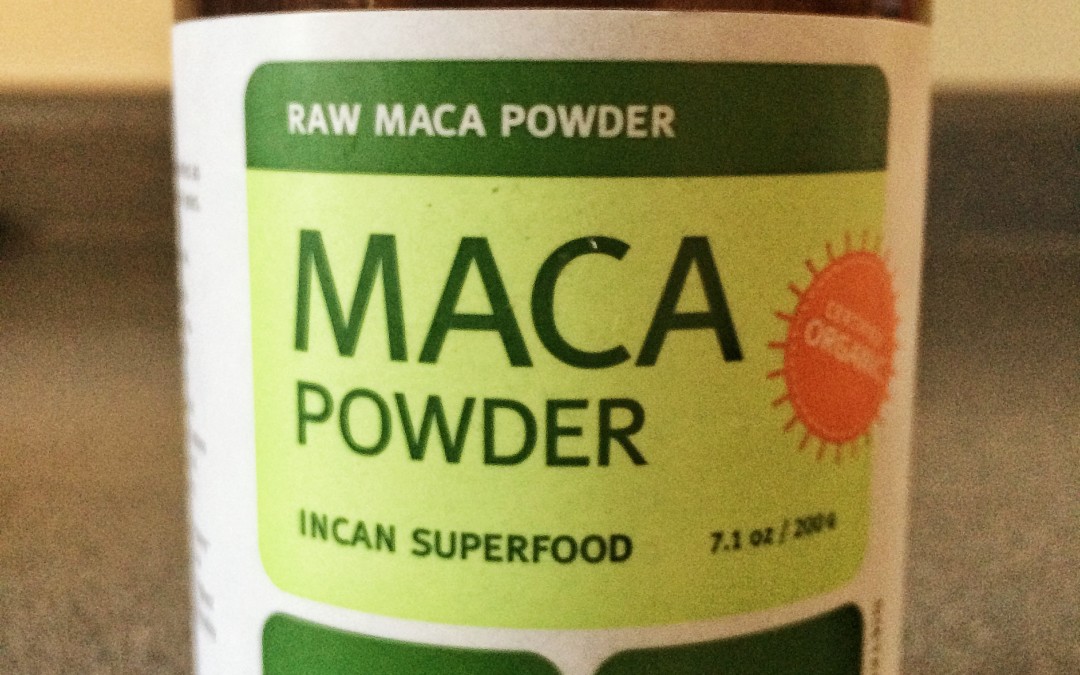
by Caroline | Jul 8, 2015 | Recipes
I accidentally bought maca powder when I meant to buy matcha powder. Oops. Oh well! I know this mysterious maca is supposed to be a superfood so I decided to do a little research on it so it doesn’t go to waste. I am SO GLAD I accidentally bought this stuff because it’s benefits are pretty freakin’ awesome.
What is it?: Maca is a root vegetable grown in the Andes Mountains. Some say it’s close to a radish or a turnip. Who knew?
What does it do?
- Increases and sustains energy. And does so without stressing the adrenals like caffeine and sugar.
- Regulates hormones
- Improves thyroid function.
- High in iodine (which has a load of health benefits in itself)
- Reduces menopause symptoms
- Reduces Depression and Anxiety
- Improves memory
- Improves muscle gain and development
- Improves circulation
Maca contains nutritious vitamins such as B1, B2, C, D, and E as well as minerals such as calcium, potassium, phosphorous, magnesium, iron, copper, iodine, manganese and zinc. It also contains essential fatty acids and ameno acids which means it’s a good source of plant protein. Wikipedia has a much more in depth explanation than I can provide.
How do you incorporate it into your diet?
Since maca is usually found in powder form it can be easily incorporated into smoothies, which is probably the most common way to use it. However I find the rich nutty flavor to be a bit strong in a smoothie so I like to add it to oatmeal. Creative people out there are always coming up with ways to incorporate it into recipes such as puddings, brownies, protein bars, homemade ice cream, desserts, and so on.
So if you happen to be in the mood to try something new that you may not have heard of before, this versatile superfood may be fun to try out.







